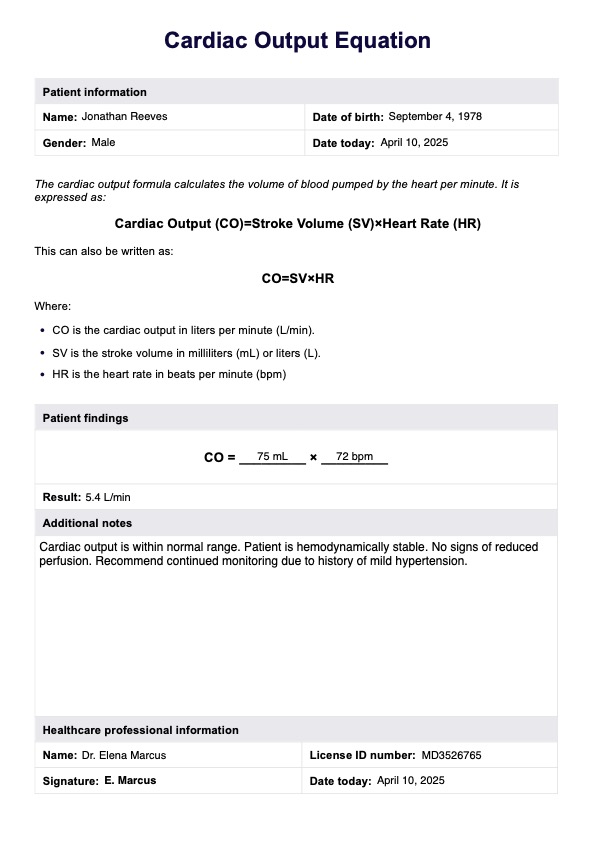Cardiac output is calculated using the formula: Cardiac Output = Stroke Volume × Heart Rate. It represents the volume of blood the heart pumps per minute.

Cardiac Output Equation
Download Carepatron's free Cardiac Output Equation PDF, which supports accurate calculations and understanding of cardiovascular function in practice.
Use Template
Cardiac Output Equation Template
Commonly asked questions
A normal cardiac output for an adult at rest typically ranges from 4 to 8 liters per minute.
If cardiac output falls below normal, it can lead to inadequate tissue perfusion, resulting in symptoms such as fatigue, low blood pressure, confusion, and in severe cases, organ failure.
EHR and practice management software
Get started for free
*No credit card required
Free
$0/usd
Unlimited clients
Telehealth
1GB of storage
Client portal text
Automated billing and online payments











